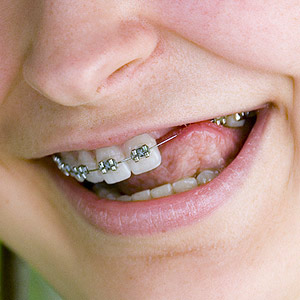
Before we begin correcting a malocclusion (poor dental bite), we need to ask a few questions: How extensive is the malocclusion? How far must we move the teeth to correct it? How might the patient’s jaw size impact treatment?
Answering these and other questions help us develop an effective treatment plan. And depending on the answers, we might need to look at other procedures before we install braces—like removing one or more of the teeth.
This isn’t a subject to approach lightly: All teeth play an important role in dental function and smile appearance, and ordinarily we want to preserve teeth, not remove them. Sometimes, however, it may be a necessary action to achieve our goal of an improved dental bite.
For example, it might be necessary for correcting a malocclusion caused by severe teeth crowding. This occurs when one or both of the jaws hasn’t grown to a sufficient size to accommodate all of the teeth erupting on it. As a result, some of the teeth could come in out of their proper alignment.
If caught early before puberty, we may be able to use other techniques to alleviate crowding, like a device called a palatal expander that influences an upper jaw to widen as it grows. If successful, it could provide later teeth more room to erupt in their proper positions.
But even if additional jaw growth occurs, it may not be enough to avoid a malocclusion or treatment with braces. Alleviating further crowding by removing teeth in little noticed areas could help with subsequent orthodontics.
Removing teeth may also be the answer for other problems like an impacted tooth, in which the tooth has not fully erupted and remains submerged in the gums. It’s sometimes possible to use a technique to “pull” the tooth down where it should be; but again, that will still require jaw space that may not be available. The more effective course might be to remove the impacted tooth.
Whether or not tooth extraction will be needed can depend on a thorough orthodontic evaluation and full consideration of all the available options. Even though the ideal situation is to correct a bite with all teeth present and accounted for, it may be for the better good to sacrifice some.
If you would like more information on orthodontic techniques, please contact us or schedule an appointment for a consultation. You can also learn more about this topic by reading the Dear Doctor magazine article “Removing Teeth for Orthodontic Treatment.”

